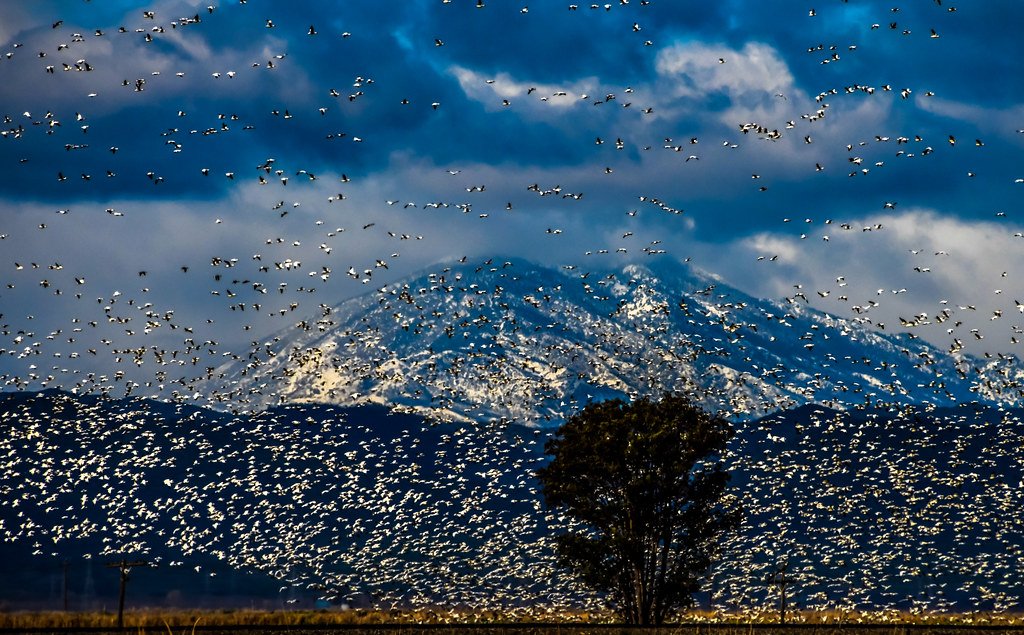Migration is one of nature’s most fascinating phenomena, showcasing incredible endurance and navigational precision. Whether it’s the long flights of birds across continents or the journeys fish undertake through vast oceans, these migrations display an astonishing blend of instinct and adaptability. But how do these animals manage such feats with astounding accuracy? The answer lies in a complex suite of navigational tools. Let’s dive into the science behind the remarkable migratory paths of birds and fish.
Understanding Migration: An Overview

Migration refers to the large-scale movement of species from one location to another, usually in response to changes in environmental conditions. This behavior is most commonly observed in birds and fish, which traverse hundreds or even thousands of miles in search of food, breeding grounds, or favorable climates. While the reasons for migration can vary between species, the underlying principles involve survival and reproduction.
Birds: Masters of the Sky

Birds are perhaps the most celebrated migrators, with species like the Arctic Tern flying from pole to pole. To achieve this, birds rely on a variety of navigational mechanisms that guide them across vast distances. These include the use of celestial cues, geomagnetic fields, and environmental landmarks, integrated with their biological clocks.
The Role of Celestial Navigation

Many birds use the sun and stars as guides. During the day, the position of the sun helps them determine direction, while nighttime travelers use constellations. Birds are equipped with an internal clock that adjusts for the movement of the sun and stars, allowing for precise calibration of their journey’s direction.
Geomagnetic Sensing: An Internal Compass

One of the most intriguing aspects of avian navigation is their ability to detect the Earth’s magnetic field. Birds have specialized receptor cells in their eyes and beaks equipped to sense magnetic fields, acting as an internal compass. This geomagnetic sensing allows them to maintain direction even when skies are overcast.
Behavioral Learning and Environmental Cues

Birds also learn migratory routes from older, experienced birds. This learning process includes recognizing environmental landmarks and adapting to weather patterns. Through this combination of learned behaviors and innate mechanisms, birds enhance their navigational skills.
Fish: Navigators of the Deep

Like their avian counterparts, fish undertake substantial migrations. Species such as salmon and eels perform these journeys with extraordinary precision, traveling thousands of miles to return to their breeding grounds. Fish use a mix of environmental cues, including water currents, temperature gradients, and chemical signals.
Following Ocean Currents

Ocean currents act like highways, guiding fish during migration. By swimming with these currents, fish conserve energy and effectively navigate large water expanses. Temperature changes in the water also signal the direction of the current, assisting fish in maintaining the correct course.
Utilizing Earth’s Magnetic Fields

Like birds, many fish are sensitive to geomagnetic fields. They possess magnetoreceptive abilities that help them orient themselves in the vast, featureless ocean. This sensitivity ensures they remain on course during migration.
Chemical and Olfactory Cues

Salmon are renowned for their ability to return to their birthplace to spawn. They achieve this through an acute sense of smell, detecting chemical cues specific to their natal rivers. This olfactory guidance is crucial for finding their way back to exact locations.
The Role of Genetics and Evolution in Migration

Migratory behavior is deeply rooted in the genetic makeup of species. Over generations, natural selection has fine-tuned these complex behaviors, favoring individuals with better navigational skills. This genetic programming ensures that successful migration patterns are passed onto future generations.
Impact of Climate Change on Migration Patterns

Recent studies have highlighted concerns over climate change disrupting migratory patterns. Alterations in temperature, weather extremes, and changing landscapes can confuse or obstruct migration routes. Conservation efforts are thus crucial to preserving these natural phenomena.
Technology and Research in Understanding Migration

Advancements in tracking and monitoring technologies, such as GPS tagging and satellite imaging, have revolutionized our understanding of migration. These tools provide valuable data, offering insights into the travel routes, stopover points, and critical habitats of migratory species.
Human Impact and Mitigation Strategies

Human activities such as deforestation, urbanization, and pollution significantly impact migration. Establishing protected migratory corridors and minimizing habitat destruction are essential steps in ensuring the continuation of these ancient journeys.
Concluding Thoughts: The Wonder of Migration

The intricate science behind animal migration reveals the extraordinary capabilities of birds and fish. Their ability to navigate vast distances with such accuracy is a testament to the marvels of evolution and adaptation. As we continue to study and protect these phenomena, we gain invaluable insights into the resilience and resourcefulness of the natural world.
In the face of environmental challenges, supporting and understanding these migrations is more critical than ever. Whether it involves preserving habitats or mitigating climate change impacts, our efforts ensure that these incredible journeys continue to inspire generations to come.




